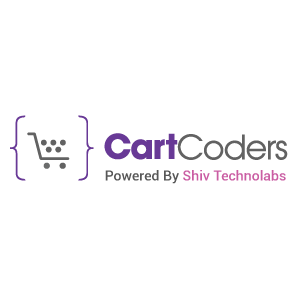Mastering Shopify Integration: Connecting with PIM and Content Providers
 CartCoders
CartCoders
With the growing eCommerce industry, a store’s success is often influenced by the capacity to efficiently handle and showcase product information. The integration of Shopify with Product Information Management (PIM) systems and content providers will make the whole process a lot easier, improving both backend and shopping experiences.
This guide will cover the need and process of Shopify third-party app integration, especially integrating with PIM systems and content providers, to expand your online store capabilities.
The Importance of PIM and Content Integration in Shopify
Shopify third-party apps are used by over 80% of Shopify merchants to run their daily operations. The integration with PIM systems and content providers enables Shopify store owners to manage large volumes of complex product information and digital content in a better way.
A PIM system operates as a central repository for your product information, helping you to enhance, organize, and distribute the data through various sales channels effortlessly. On the other hand, content creators can enrich your product listings with engaging descriptions, good quality photos, videos and so on.
These integration are essential for:
Ensuring consistency and accuracy: Centralization of the product information management helps keep the information uniform and correct on all platforms.
Enhancing SEO and customer engagement: High quality, detailed content can improve search engine ranking and entice customers more effectively.
Streamlining workflow: Automating the data flow among the systems is an effective way of reducing manual efforts and minimizing mistakes.
Facilitating scalability: An efficient management system in place ensures that the scaling up of inventory and the expansion to the new markets is less tedious.
Choosing the Right PIM and Content Providers

Selecting the right PIM system and content provider is crucial. Consider the following when choosing:
Compatibility with Shopify
Opt for systems that integrate seamlessly with Shopify to allow for real-time synchronization and updates. This ensures that any changes in product data are immediately reflected in your store, maintaining consistency across all customer touchpoints.
Scalability
The chosen PIM should be capable of handling your current product needs and scalable enough to accommodate future growth. This includes managing an increasing number of SKUs, handling more complex product information, and supporting expansion into new markets without performance degradation.
Customization capabilities
Every business has unique needs. Your PIM system should offer customization options that allow you to tailor functionalities such as data models, workflows, and user interfaces to suit your specific operational requirements.
Integration with other tools
A PIM system should not only work well with Shopify but also integrate smoothly with other tools used in your business, such as ERP systems, marketing automation tools, and customer relationship management (CRM) systems. This ensures that all your business systems work cohesively, enhancing efficiency.
Cost-effectiveness
Evaluate the total cost of ownership of the PIM system, including initial setup costs, monthly or annual subscription fees, and any charges for additional features or integrations. Opt for a solution that offers a good balance between cost and functionality to ensure it delivers value without straining your budget.
How to Implement Shopify Integrations with PIM and Content Providers

Step 1: Define your needs
Before integrating any system, clearly define what you need from a PIM and content provider. Determine the type of data you will be managing, the volume of content, and how frequently it will need to be updated.
Step 2: Select the right tools
Choose a PIM system and content provider that best meet your needs based on the criteria mentioned above. Popular PIM systems that integrate well with Shopify include Akeneo, Pimcore, and Salsify.
Step 3: Plan the integration
Plan out the integration process with the assistance of Shopify third-party app integration services. Decide which data should be synchronized between systems, such as product descriptions, specifications, prices, and images. Determine how often data syncing should occur to keep all platforms updated.
Step 4: Execute the integration
Execute the integration, often with the help of a Shopify third-party app integration service. These services can help ensure that the integration is smooth and that the systems communicate effectively, mitigating the risk of data errors or downtime.
Step 5: Test and optimize
After integration, thoroughly test the system to ensure everything is working as expected. Check that data flows correctly between systems and that updates on one platform correctly populate across others. Continue to optimize the process based on feedback and performance.
Conclusion
Integrating Shopify with robust PIM systems and content providers is essential for businesses looking to scale and maintain high levels of accuracy in their eCommerce operations. While the process can be complex, CartCoders can alleviate many of the challenges associated with these integrations.
By leveraging their expert services, Shopify store owners can significantly enhance their product information management and overall content strategy, leading to better eCommerce SEO, higher customer engagement, and increased sales.
Subscribe to my newsletter
Read articles from CartCoders directly inside your inbox. Subscribe to the newsletter, and don't miss out.
Written by

CartCoders
CartCoders
CartCoders stands at the forefront of the eCommerce industry as a premier Shopify development company and Shopify app development company. With deep-rooted expertise in creating innovative, high-performance online stores and custom applications, we empower businesses to thrive in the competitive marketplace. Our Services includes: Shopify Store Development Shopify Marketplace Shopify Integrations Shopify App Development Shopify Headless Commerce Development Shopify Mobile App Development